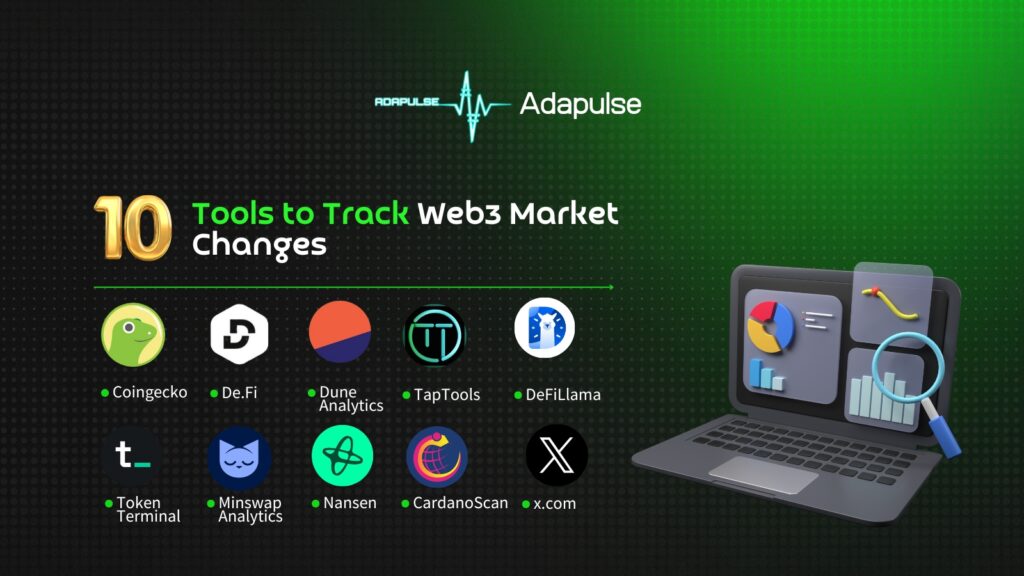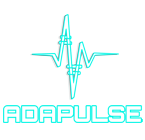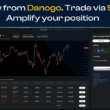Most people in Web3 lose money not because they made the wrong bet, but because they weren’t paying attention. Before going into which tools to use, it’s important to understand why tools like these matter in the first place. A lot of people in the Web3 space rely too much on hype, random influencers, or the hope that they are early in something big. But the truth is, the people who last in this space are the ones who take time to study what is actually happening on-chain and in the market. Tools give you data. Without data, you’re just guessing.
Market tools are there to help you make decisions based on facts. They show you where money is going, where big guys are active, what tokens are moving fast, and which ones are slowing down. This is important because the Web3 market moves quickly. Projects that look solid today can fall apart next week. If you are not tracking changes, you might end up holding tokens that are losing value fast or missing out on newer opportunities that others saw earlier.
Another reason to use these tools is that they cut through noise. Social media is full of opinions, fake news, and sponsored hype. But numbers don’t lie. When you use real tools to track volume, liquidity, and wallet activity, you’re looking at real behavior. This helps you avoid emotional decisions and keeps you focused on what matters.
Many people think these tools are hard to use or only for enthusiasts. That’s not true. Most of them have simple dashboards. You don’t need to be a developer or trader. You just need to learn how to look at trends, compare data, and ask basic questions like, is this project gaining users or losing them. Is this token being bought or sold. These are simple habits that lead to smarter decisions.
Key Takeaways
- Real tools show what’s actually happening in the market.
- Watching trends, volume, and wallet moves helps you act before it’s too late.
- Check a few tools each week to stay ahead without stress.
10 Tools to Track Web3 Market Changes and Stay Informed
Here are ten essential tools to track market changes, including some for Cardano specific projects and multichain data platforms.

- CoinGecko: This tool helps you track token prices, market caps, and volume across most blockchains. It also shows trending coins, which is often a signal of where attention is going. You can set up a portfolio to watch your own tokens and see how they move over time.
- De.Fi: De.Fi is a multichain tool for checking your wallet exposure, risk level, and even revoking smart contract approvals. It also tracks total value locked (TVL), active protocols, and yield farming options. It is useful for spotting which chains are getting more attention and where capital is flowing.
- Dune Analytics: Dune lets anyone create and share dashboards using blockchain data. Many dashboards show live people’s trading activities, smart contract interactions, volume trends, and even whale movements. It’s used for multichain platforms. Watching dashboards for top protocols helps you track usage shifts.
- TapTools: This is a Cardano based platform that shows token price charts, wallet tracking, and market movements inside the Cardano ecosystem. It helps you track native tokens and see which wallets are buying or selling. For anyone active on Cardano, this is a key place to check.
- DeFiLlama: DeFiLlama shows real time TVL data across hundreds of protocols and chains, including Ethereum, Solana, Cardano, and more. It helps you see which chains or dApps are growing or shrinking. A steady rise in TVL often signals user interest and trust, while sharp drops may be early warning signs.
- Token Terminal: This tool focuses on fundamentals, how much revenue a protocol is earning, how many active traders it has, and how efficient it is. It works like a financial data terminal but for blockchain projects. If you’re trying to avoid hype only projects and want to invest in something sustainable, this is one of the best tools to use.
- Minswap Analytics: As the top DEX on Cardano, Minswap has its own analytics page showing liquidity, token pairs, volume, and swaps. If you want to know what Cardano users are doing, this gives a real view of money movement in and out of tokens. It’s also a good tool to catch new interest in a Cardano token before it becomes common knowledge.
- Nansen: Nansen tracks wallet behavior, especially smart money wallets that often buy early and sell before drops. It can be used to monitor inflows and outflows, track tokens held by large players, and see what top performing wallets are doing. It gives you a look at how experienced players behave, not just what they say.
- CardanoScan: This is a detailed blockchain explorer for the Cardano network. It helps you track wallet activity, project transactions, and block data. For people active in the ecosystem, it’s a simple way to monitor project health and user behavior without needing technical knowledge.
- Crypto Twitter (x.com): Social signals still matter. Many narratives start on X. Following builders, analysts, and projects gives you an early look at what people are excited about. If the same project shows up in the data and on social media, it’s worth watching.
How to Use These Tools in Practice
- Use CoinGecko or TapTools to track daily price and volume movements. Set alerts if possible.
- Visit DeFiLlama weekly. Look at chains or dApps with steady growth or sharp drops.
- Use Token Terminal to find out which projects are making real revenue. Skip hype only ones.
- Use Nansen or De.Fi to track what top wallets are doing. If they’re leaving, ask why.
- Visit Dune or Minswap Analytics to see real usage, not just token movement.
- Check social media and community activity for sudden changes in tone, new updates, or silence.
- Use De.Fi regularly to remove old token approvals in your wallet. This is basic safety.
- You don’t need to use everything daily. Pick 3 or 4 tools and build a habit around them.
- Take short notes each week about what you notice. Trends are easier to see over time.
- Don’t act on hype. Let the tools confirm what’s real.
In short, these tools exist to help you stay ahead. They help you avoid big losses and find better entries. If you are serious about making profit or protecting what you’ve already earned, then using these tools is not optional. It’s basic. It’s the starting point. Without them, you’re just guessing in a space that punishes slow and careless decisions.










